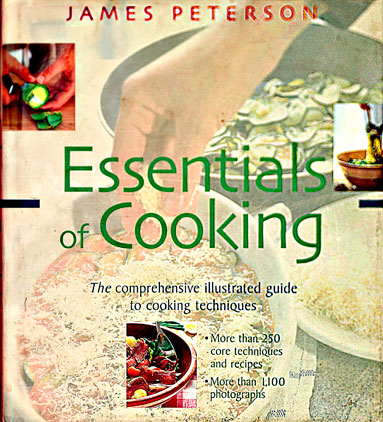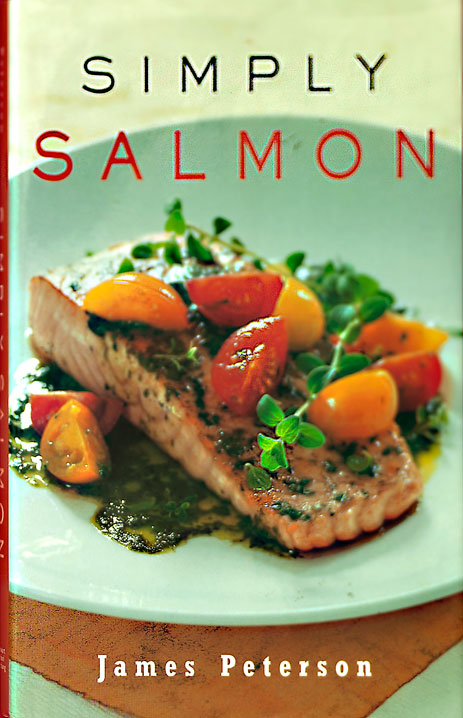A meurette sauce is a simple red wine sauce made with mirepoix (a mixture of diced carrots, celery, and onions, with onions prevailing), prosciutto and herbs. One of its great advantages is that it can be made without broth or stock.
There are a couple of secrets to success: careful and repeated caramelization of the wine and mirepoix and long simmering of the red wine to cook out its tannins and diminish some of its acidity.
Start by gently sweating the mirepoix and the diced prosciutto (you need very little, about a ¼ pound for 4 to 6 servings) until they start to brown. Add a cup or so of wine and boil it down to nothing and, in fact, allow it to caramelize on the bottom of the pan. This process can be repeated indefinitely. Once the first addition(s) of wine have been caramelized, add about 2 cups of wine, a bouquet garni (with thyme, bay leaf and parsley) and simmer very gently for about 20 minutes. Strain and reduce.
The question of how much to reduce the sauce depends on how you’re going to thicken it. Traditionally, it is thickened with a paste of flour and butter (beurre manié) but it can also be thickened with butter alone. When thickening with butter alone, the sauce should be reduced to about a half cup before any butter is added. Swirl in the cold butter with the sauce over the heat but not boiling. If thickening with beurre manié, you need only reduce the braising liquid down to about a cup.
For many poached egg dishes, including eggs en meurette, the eggs are placed on croutons—slices or rounds of bread that have been toasted or cooked in butter. Most of the time the crouton ends up soggy from the moisture attached to the egg. To avoid this, cook rounds of crustless bread in butter such that the bread absorbs the butter and becomes water resistant and crunchy. A further tip—use clarified butter to keep the croutons from being covered with specks of caramelized milk solids.
When the sauce and croutons are ready, you can go ahead and poach the eggs. You can also poach the eggs ahead of time if you’re cooking for more than a couple of people. To do this, put the eggs into a bowl of ice water as soon as they’re ready. When you’re ready to serve them, drain off the water, add boiling water, and let sit for a minute or so before scooping them out with a slotted spoon. Before placing each egg on a crouton, touch the spoon to a kitchen towel to absorb excess moisture.
There’s a lot of hocus pocus when it comes to poaching eggs. Some recipes call for adding vinegar (which does nothing except smell up the house) while others call for swirling the water so it forms a vortex, problematic since you can only poach one egg at a time. The best approach is simply to crack the eggs over a pan of simmering water, holding the egg as close to the water as possible when you open it. The eggs tend to sink and sometimes attach to the bottom—don’t try to detach them prematurely or you’ll tear the bottom of the yolk which will then leak out.
You can serve your eggs with a simple sauce or you can combine other elements such as you might a stew. Some recipes for oeufs en meurette call for mushrooms while others call for the entire Burgundian garniture of mushrooms, pearl onions and bacon lardons—not a bad idea, but one that makes a basically simple dish into a rather complicated one. Mushrooms alone, however, are easy enough to handle, and they add dimension to the sauce and another element to the finished dish. I look for the smallest mushrooms, break off their stems, and cook the stems with the aromatic ingredients before I add the wine, and simmer the caps—either whole or cut vertically in quarters—in a little of the wine, and return the resulting wine mushroom-juice mixture to the sauce during reduction. A few dried porcini slices, cooked with the aromatic vegetables at the beginning, add an almost magical earthy note, the origin of which few people will suspect (it will be attributed to your culinary genius).
Of all poached-egg dishes, eggs Benedict is the most famous, and perhaps deservedly so, the combination of melting egg yolk and the rich, mildly acidic hollandaise, while seemingly redundant, being hard to match. I make eggs Benedict with béarnaise sauce instead of hollandaise and substitute a thin slice of prosciutto for the usual Canadian bacon. I also like to prepare croutons, like those described above, instead of English muffins, which always seem too thick and doughy. Anyone who goes out to brunch with any regularity will have already encountered a collection of eggs Benedict variations, some delicious, some ill conceived. The better-known variations include replace the Canadian bacon with spinach (Florentine), chopped mushrooms, or asparagus. Classic French versions are extravagant and baroque—slices of foie gras, crayfish tails, truffles, rich sauces, all have their encounters with poached eggs.



I learned this recipe from your book Cooking. It is one of my favorites of all time. I make extra sauce and put it on chicken or meat the next day for dinner. It seems like every time I prepare, it is the first time my guest has had it. Thanks for the porcini variation; I’ll be trying that next time. I’ll bet morels are good, too.
Hi Ben,
Let me know how the porcini variation comes out; it’s hard to imagine it will be bad.
I was a bit surprised about your remark that you should not add vinegar when poaching an egg. In your book Essentials of Cooking you instruct people to add vinegar. Is the translation not correct (I have the Dutch version of your book) or have you changed your mind?
Hi Jacco,
Yes, I changed my mind. I find that my cooking becomes simpler and simpler and that as I learn, I cut out superfluity. Sorry if I’ve caused you any confusion.
jim
Yes, I just found it made little difference and just smelled up the egg and kitchen.
I have changed my mind!
I think the reasoning behind the addition of vinegar ( acid ) is to “curdle” the egg white, which is not poaching, to gain control over it. It really doesn’t do much though. Swirling doesn’t force the egg to the center it dashes it all over the pot. So far all that I’ve found to “tech” assist poaching is to start with a warm egg. SV them in the shell at 135 to 140 F. They are close to coagulation temp and set up quickly when put in the water. Otherwise, it’s like anything else. Do it until you teach your hands how to.